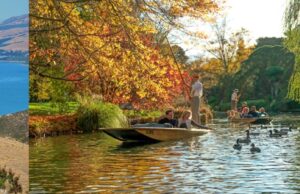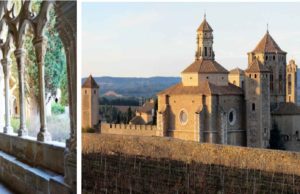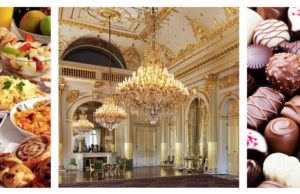
WoT's Hot
The speaker in my cabin blared out, “Good Morning, Ladies and Gentlemen. Welcome to Turkey. We shall soon be docking at Kusadasi. Well, that was the end of a good-night’s sleep that I was having after a grand dinner in the ship’s hall the previous evening. I had to pull myself up and get dressed for further sight-seeing that day.
We had come to Greece from Turkey earlier. Our ship, the ‘Valetta’ of the Easy Cruise Company, had set sail from the port of Piraeus in Athens, post completion of our tour of Athens. We were on the Aegean Sea for about three days, sailing to Turkey once again in order to reach a very coveted destination. All of us felt a little uncomfortable when we were asked to hand over our passports before getting on board, but the view, once the ship set sail, made us forget everything.
It was about 10 a.m. when we reached Kusadasi, a Turkish port-city founded in 3,000 B.C. and quite naturally steeped in history. We boarded the buses waiting at the port to take us to the ruined city of Ephesus which can perhaps be traced back to the Neolithic age. It had been under Greek influence, then the Roman, Byzantine and finally the Ottoman. Our motor-coach passed alongside a bay and at that point, our guide informed us that we were only a few hours away from Troy. All history-lovers in the bus were more than thrilled to realize that they were close to the place where perhaps Paris had brought Helen from Greece and Achilles and Hector had fought viciously. We did not want to think about the debates regarding the existence of a long-drawn Trojan war.
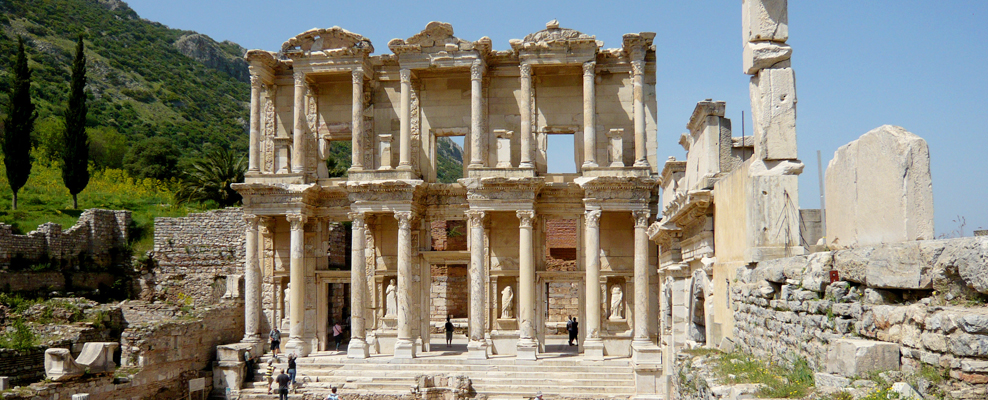
The beauty of the Bay was amazing but we had to leave it behind and drive past lush greenery to enter the realm of the hills from where it would literally be quite an up-hill drive to the House of the Virgin Mary. I had read that the tie between Ephesus and Christianity was very strong as both Saint Paul and Saint John had resided there for some time. Ephesus, we were told, was also the place where seven men, later called the Seven Sleepers, had entered a cave while fleeing from their persecutors or had been made to enter it as punishment, and had slept there for three or more centuries. The Holy Bible also makes a mention of this place several times. We were informed that we would be paying a visit to the House where the blessed Virgin is believed to have spent her last years before leaving for her Heavenly abode. After taking some pretty sharp curves and hair-pin bends, our coach finally stopped near the sacred house. The view from above the hill here was just incredible.
The House has been preserved quite well and one could easily make out the difference between the original layers of bricks near the base of the house and the walls and those of the renovated portions. This simple house had a special attraction for all tourists because of the ‘story’ associated with this place. This single-storied structure, as mentioned, is a place of worship. Surrounded by a beautiful landscape, it stands amidst gardens, trees and paved pathways. There is an air of tranquility here and everyone moved about very quietly. No one knows for certain whether the Virgin actually lived there, but visitors generally light candles and send up silent prayers. Taking of photographs inside the house was strictly prohibited. After a visit to this serene place, we all agreed that it had been an absolutely unforgettable experience. As it is a tourist spot, there are many shops all around selling mainly Christian artifacts, Turkish Delight, a special sweetmeat of Turkey, and, believe it or not, ‘Genuine Fake Watches’!
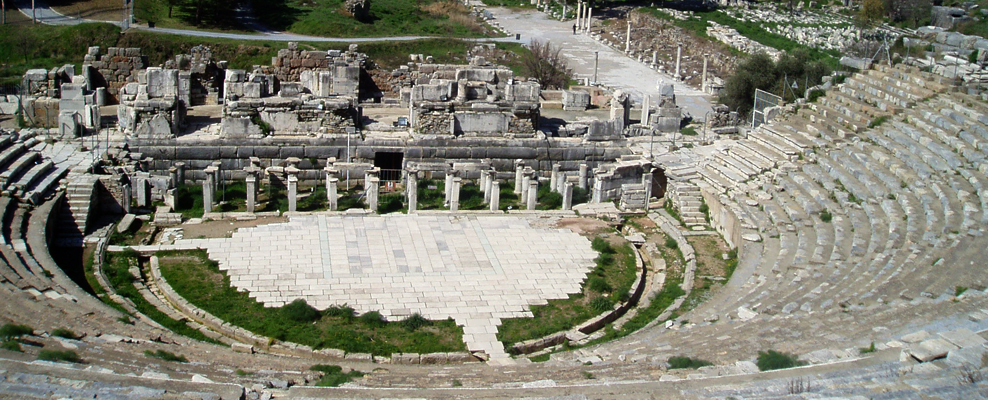
From Religion to History, this is how I can describe our journey from this place to the ruins of Ephesus, once a great city of Asia Minor and the last city on the famous Silk Route.
Broken pillars, cobbled pathways and ancient alleys greeted us silently as we walked through the ruins of Ephesus. Numerous statues, ancient mortar and pestle signs of hospital and pharmacy, fountains and arches, remains of sewer pipes, all tell their own story. Even mosaics from those times have been very well preserved for tourists to see and wonder. The Hadrian’s Temple, a market place called the Agora, a huge amphitheater and the ruined Library of Celsius will leave any visitor wordless. This library was once the third largest in the ancient world. We were all actually walking on a pathway two thousand five hundred years old and when our guide informed us that Mark Antony too had taken that route, we could only stare open-mouthed. Another surprise was a backgammon game-board clearly visible on a marble slab. Everything here had a connection with the past and we really delighted to see a stone carving of the Goddess Nike along with a sign somewhat similar to the Nike “Swoosh”!
As it was just a twenty-minute drive from the ruins to Kusadasi, we were back in the city in no time. The modern city with its cars and shops was in stark contrast to the ruins we had just left behind. Since Kusadasi is famous for carpets, we were then taken to a carpet factory. But, before entering a large showroom we saw how carpets were being woven manually. Inside, we were offered refreshments and tea before the actual demonstration began. One by one the salesmen rolled out carpets of different shapes and sizes. Their beautiful designs and vibrant colors literally took our breath away. But, it was the price that left us quite speechless!! Most of us walked out in a daze and proceeded towards the waiting ship, mentally calculating just how much one would require in Indian currency to ship a single king-size, super-quality Turkish carpet home!!!
The speaker in my cabin blared out, “Good Morning, Ladies and Gentlemen. Welcome to Turkey. We shall soon be docking at Kusadasi. Well, that was the end of a good-night’s sleep that I was having after a grand dinner in the ship’s hall the previous evening. I had to pull myself up and get dressed for further sig
What to read next
Featured articles

Welcome Festive Season in Glam, Latin Quarters Launches new #PujoBling Collection with Monami Ghosh
by WOT




































